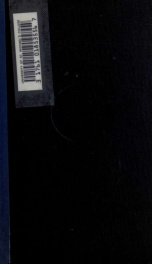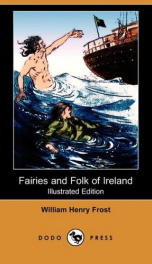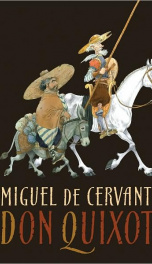Euripides

George Gilbert Aimé Murray (2 January 1866 – 20 May 1957) was an Australian born British[1] classical scholar and public intellectual, with connections in many spheres. He was an outstanding scholar of the language and culture of Ancient Greece, perhaps the leading authority in the first half of the twentieth century. He is the basis for the character of Adolphus Cusins in his friend Shaw's play Major Barbara, and also appears as the chorus figure in Tony Harrison's play Fram. He was born George Gilbert Aimé Murray in Sydney, New South Wales, Australia. His father, Sir Terence Aubrey Murray, was a Member of the New South Wales Parliament who died in 1873; his mother, Agnes Ann Murray (née Edwards), ran a girls' school in Sydney for a few years. Then, in 1877, Agnes emigrated with Gilbert to the UK, where she died in 1891.[2] Gilbert was educated at Merchant Taylors' School and St John's College, Oxford. In 1889–1899, he was Professor of Greek at the University of Glasgow.[3] There was a break in his academic career from 1899 to 1905, when he returned to Oxford; he interested himself in dramatic and political writing. After 1908 he was Regius Professor of Greek at the University of Oxford.[4] From 1925-1926 Murray was the Charles Elliot Norton Lecturer at Harvard University. Murray is perhaps now best known for his verse translations of Greek drama, which were popular and prominent in their time. As a poet he was generally taken to be a follower of Swinburne; and had little sympathy from the modernist poets of the rising generation.[5] The staging of Athenian drama in English did have its own cultural impact.[6] He had earlier experimented with his own prose dramas, without much success. Over time he worked through almost the entire canon of Athenian dramas (Aeschylus, Sophocles, Euripides in tragedy; Aristophanes in comedy). From Euripides, the Hippolytus and The Bacchae (together with The Frogs of Aristophanes; first edition, 1902);[7] the Medea, Trojan Women, and Electra (1905–1907); Iphigenia in Tauris (1910); The Rhesus (1913) were presented at the Court Theatre, in London.[8] In the United States Granville Barker and his wife Lillah McCarthy gave outdoor performances of The Trojan Women and Iphigenia in Tauris at various colleges (1915). The translation of Œdipus Rex was a commission from W. B. Yeats.[9] Until 1912 this could not have been staged for a British audience. Murray was drawn into the public debate on censorship that came to a head in 1907[10] and was pushed by William Archer, whom he knew well from Glasgow , George Bernard Shaw[11], and others such as John Galsworthy, J. M. Barrie and Edward Garnett. A petition was taken to Herbert Gladstone, then Home Secretary, early in 1908. He was one of the scholars associated with Jane Harrison in the myth-ritual school of mythography.[12] They met first in 1900.[13]. He wrote an appendix on the Orphic tablets for her 1903 book Prolegomena; he later contributed to her Themis (1912)[14]. Francis Fergusson wrote He was a lifelong supporter of the Liberal Party, lining up on the Irish Home Rule[16] and non-imperialist sides of the splits in the party of the late nineneeth century. He supported temperance[17], and married into a prominent Liberal, aristocratic and temperance family, the Carlisles. He made a number of moves that might have taken him into parliamentary politics, initially by tentative thoughts about standing in elections during the 1890s. In 1901-2 he was in close contact with the Independent Labour Party.[18] But the overall effect of the Second Boer War was to drive him back into the academic career he had put on hold in 1898, resigning his Glasgow chair (effective from April 1899). He stood five times unsuccessfully for the University constituency of Oxford between 1919 and 1929. He continued support for the Asquith faction of Liberals, after the party was split again by Lloyd George.[19][20][21] During the 1930s the Liberals as a party were crushed electorally, but Liberal thinkers continued to write; Murray was one of the signatory Next Five Years Group formed around Clifford Allen.[22] As Regius Professor and literary figure, he had a platform to promote his views, which were many-sided but Whig-liberal.[23] In 1912 he wrote an introduction to The Great Analysis: A Plea for a Rational World-Order, by his friend William Archer.[24] During World War I he became a pamphleteer, putting a reasoned war case. He also defended C. K. Ogden against criticism[25], and took a public interest in conscientious objection.[26][27] Murray never took a pacifist line himself, and in fact broke an old friendship with Bertrand Russell early in the war.[28] He was also involved as an internationalist in the League of Nations. He was a Vice President of the League of Nations Society from 1916,[29], and in 1917 wrote influential articles in the Daily News.[30] At the invitation of Jan Smuts he acted in 1921/2 as a League delegate for South Africa.[31][32] Later he was a major influence in the setting-up of Oxfam[33][34] and of the Students' International Union (later the Institute for World Affairs). For a brief period Murray became closely involved with the novelist H. G. Wells. Initially this was in 1917 and connection with groups supporting a future League: Wells promoted a League of Free Nations Association (LFNA), an idea not in fact exclusive to him, since it had been 'up in the air' since Woodrow Wilson had started considering post-war settlements. Wells applied through the British propaganda office with which Murray had been connected since 1914. The two men corresponded from 1917 about League matters.[35] Wells was bullish about pushing ahead with a British LFNA, Murray was involved already in the League of Nations Society (LNS), though not active.[29] The political position was delicate, as Murray understood and Wells may not have: the LNS overlapped with the Union of Democratic Control, which was too far towards the pacifist end of the spectrum of opinion to be effective. Eventually in 1918 the LFNA was set up around Welsh Liberal MP David Davies, and then shortly the LFNA and LNS merged as the League of Nations Union.[36] Two years later, Wells called on Murray, and Murray's New College colleague Ernest Barker, to lend their names as advisers on his Outline of History. Their names duly appeared on the title page.[37] Murray had to give evidence in the plagiarism case Deeks v. Wells that arose in 1925.[38] Murray is often identified as a humanist, typically with some qualification ('classical', 'scholarly', 'engaged', 'liberal'). He joined the Rationalist Press Association, and in 1952 attended a major humanist conference. He wrote and broadcast extensively on religion (Greek, Stoic and Christian); and wrote several books dealing with his version of humanism.[39] A phrase from his 1910 lectures Four Stages of Greek Religion enjoyed public prominence: the "failure of nerve" of the Hellenistic world, of which a turn to irrationalism was symptomatic.[40] His daughter Rosalind (later Rosalind Toynbee), a Catholic convert, attacked his secularism in her book of apologetics, The Good Pagan's Failure (1939). Murray was baptised as a Roman Catholic; his father was a Catholic, his mother a Protestant. About a month before he died, when he was bedridden, his daughter Rosalind called the local Catholic priest to see him.[41] While Rosalind subsequently claimed that Murray was then reconciled to the Catholic Church; other family members contested Rosalind's version of the events. He refused an knighthood in 1912,[42] though he was appointed to the Order of Merit in 1941. He received honorary degrees from Glasgow, Birmingham, and Oxford. [6] He gave the 1941 Andrew Lang lecture. Gilbert's father was Sir Terence Aubrey Murray and his brother Sir Hubert Murray. He married Lady Mary Henrietta Howard (1865–1956), daughter of George Howard, 9th Earl of Carlisle. When her mother Rosalind Howard, Countess of Carlisle died in 1921, Castle Howard was bequeathed to Lady Mary. She arranged to exchange it with other property, however, with her brother Geoffrey.[43] Gilbert and Lady Mary had five children, three daughters and two sons, including: The four children were evacuated during the second world war from London to the "Sands House Hotel", Brampton Cumberland, which was converted to temperance status by Lady Rosalind, and run by Mrs and Mrs James Warwick, formerly in her service, with their daughter Charlotte Elizabeth. She became an enduring friend of the boys, and, poignantly, an unfinished letter to her was found on Gilbert's body after the accident.
do you like this author?
What readers are saying
What do you think? Write your own comment on this book!
write a commentWhat readers are saying
What do you think? Write your own comment on this author!
write a commentBook list

Euripides, with an English translation 2
Series:
Unknown
Year:
Unknown
Raiting:
3.5/5
--I. Iphigeneia at Aulis. Rhesus. Hecuba. The daughters of Troy. Helen.--II. Electra. Orestes. Iphigeneia in Taurica. Andromache. Cyclops.--III. The Bacchanals. The madness of Hercules. The children of Hercules. The Phoenician maidens. Suppliants.--IV. Ion. Hippoiytus. Medea. Alcestis 27 43
Show more
add to favoritesadd In favorites

Alcestis : and other plays
Series:
Unknown
Year:
Unknown
Raiting:
3/5
Alcestis -- Electra -- Orestes -- Iphigenia in Aulis -- Iphigenia in Tauris -- The Trojan dames 26 31
Show more
add to favoritesadd In favorites

The Bacchanals : and other plays
Series:
Unknown
Year:
Unknown
Raiting:
4/5
Ion -- Medea -- The Phoenician damsels -- Euripides -- The Suppliants -- Hippolytus 26 31
Show more
add to favoritesadd In favorites

Troades; with rev. text and notes by Robert Yelverton Tyrrell
Series:
Unknown
Year:
Unknown
Raiting:
3.5/5
26
Show more
add to favoritesadd In favorites

Hecuba, Orestes, Phoenician virgins, and Medea. Literally translated into English prose, from the text of Porson
Series:
Unknown
Year:
Unknown
Raiting:
4/5
26
Show more
add to favoritesadd In favorites

The Hecuba, Medea, Phoenissae, and Orestes, of Euripides. Literally translated into English from the text of G. Dindorf, with Porson's various readings. To which are added critical notes from the best commentators
Series:
Unknown
Year:
Unknown
Raiting:
3.5/5
26
Show more
add to favoritesadd In favorites
What readers are saying
What do you think? Write your own comment on this author!
write a commentif you like Euripides try:
readers also enjoyed
What readers are saying
What do you think? Write your own comment on this author!
write a commentGenre
if you like Euripides try:
readers also enjoyed
Do you want to read a book that interests you? It’s EASY!
Create an account and send a request for reading to other users on the Webpage of the book!























